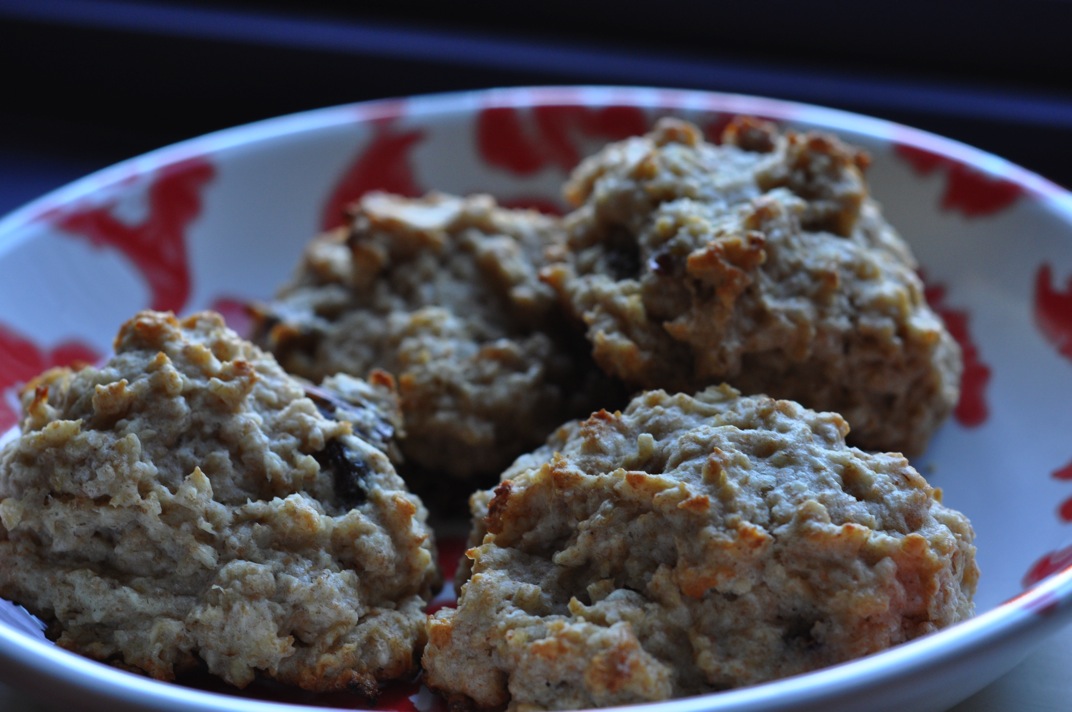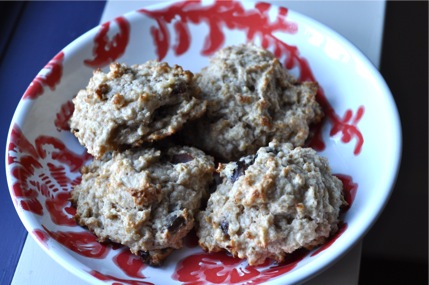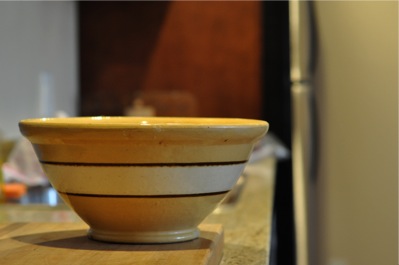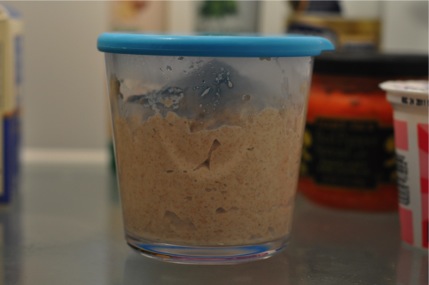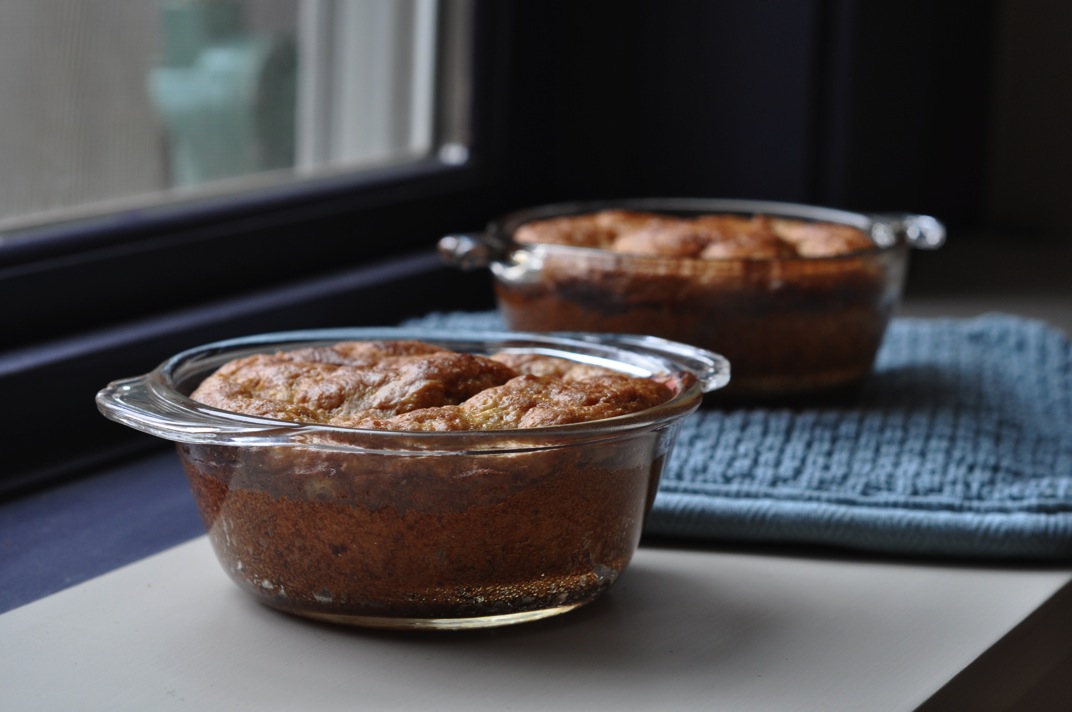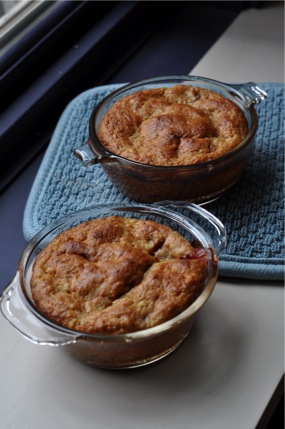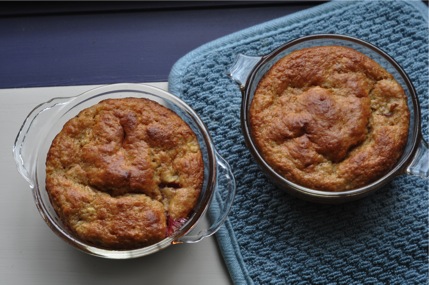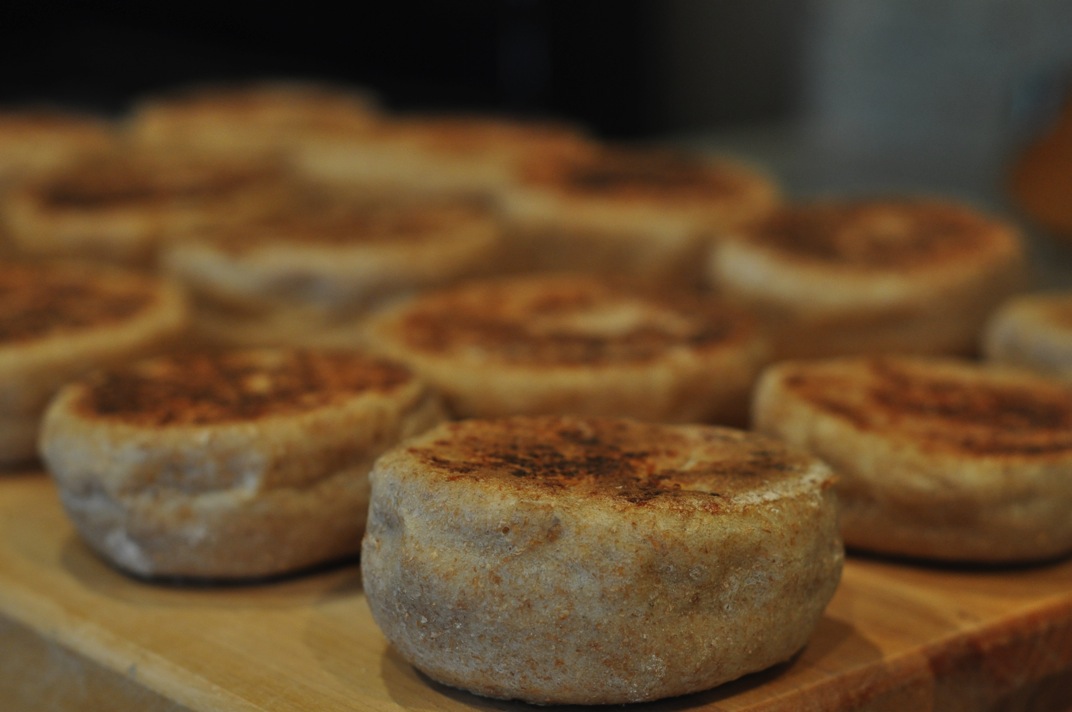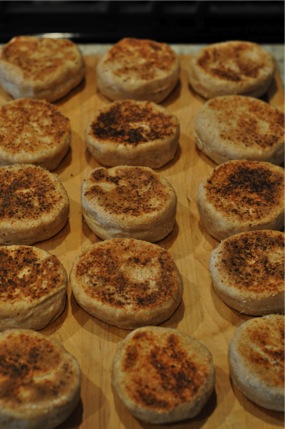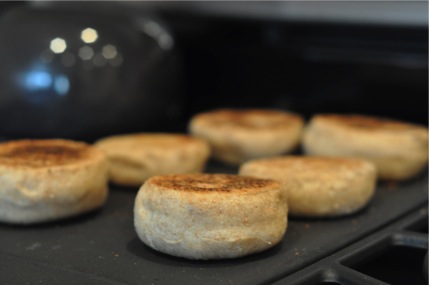I get annoyed with myself when I make something wintery in the summer or something summery in the winter. Out-of-season ingredients tend to make me cringe and I feel guilty for not making use of the bounty available. Sometimes, though, you just have to have pumpkin pie in July.
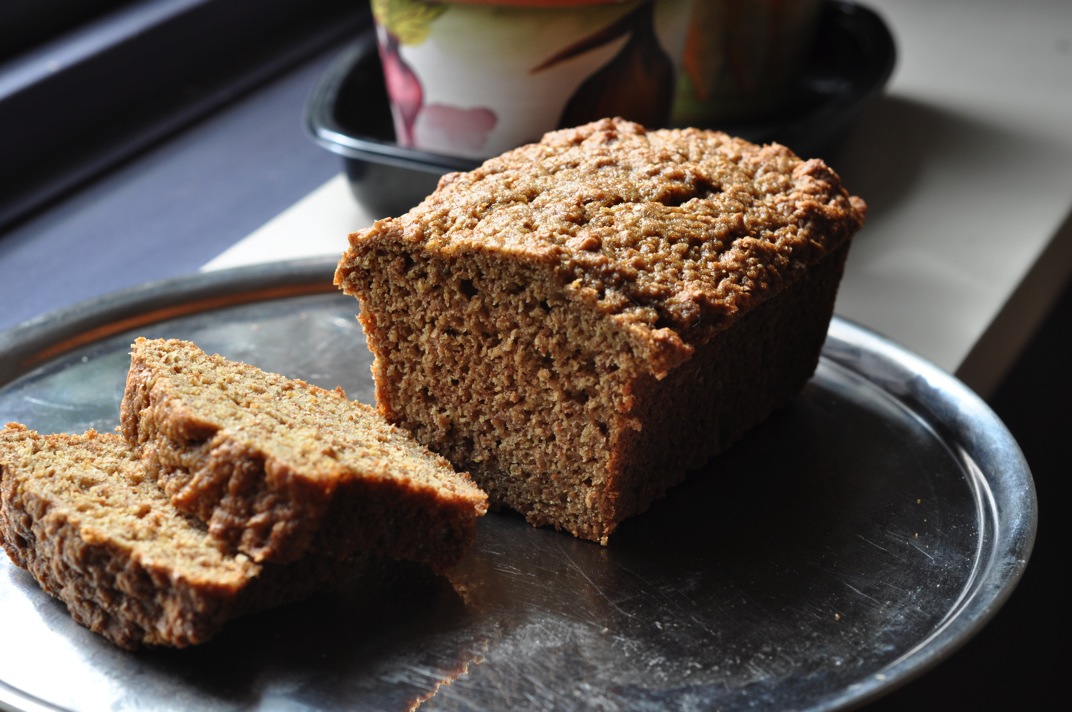
Okay, so I didn’t make pumpkin pie. I made applesauce bread. There was a jar of applesauce in the fridge that needed to be used…and there’s still a little left in that jar. There is also still half a carton of heavy cream left after I tried to use it up in this recipe. Guess I’ll just have to bake more!
I like this recipe. I’m surprised that I like it, actually, since Paula Deen’s style is usually a little too heavy for me. I like that she only calls for 1/4 cup of sugar but, in retrospect, I think that’s because she meant for me to use sweetened applesauce. I don’t remember when I last bought sweetened applesauce.
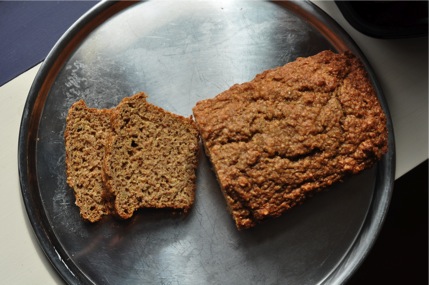
With only 1/4 cup of brown sugar this bread is not at all sweet. It’s spicy and fruity, though, and I was happy to find that the heavy cream added plenty of richness. It was a perfectly adequate substitute for butter, and hey, compared to butter, cream is light!
Other than throwing in my needed-to-be-used cream, I also healthified the flour in this recipe. I tried graham flour, something I had only read about until I found it in the bulk bins at my local co-op. Graham flour + wheat germ turned out a grainy bread with a crumby, crunchy crust. I approve! If you don’t have graham flour, whole wheat will make a fine substitute

Applesauce Bread
Adapted from Paula Deen
1/2 cup heavy cream
1/4 cup brown sugar (add more if you want sweet!)
1 1/2 cups graham flour
1/2 cup wheat germ
1 teaspoon baking powder
1 teaspoon baking soda
1/2 teaspoon salt
1 teaspoon ground cinnamon
1 teaspoon allspice
1 teaspoon vanilla extract
1 cup unsweetened applesauce
2 large eggs
optional: 1 cup raisins, 1/2 cup chopped walnuts
Preheat oven to 350 degrees F.
In a medium bowl, blend flour, wheat germ, baking powder, baking soda, salt, and spices.
In a separate, larger bowl, beat cream and sugar together until sugar dissolves.
Add eggs, beating well, then add applesauce and vanilla extract. Stir until fully combined.
Pour dry mixture into wet. Stir until well blended but do not over mix.
Fold in nuts and raisins, if using.
Pour into greased and floured 8x4x3 inch loaf pan or some combination of smaller pans (I used 2 mini loaf pans and 2 mini Bundt pans).
Bake at 350 for 60-65 minutes if using larger pan or 30 minutes for smaller pans.
Ahhh, smells like fall!

